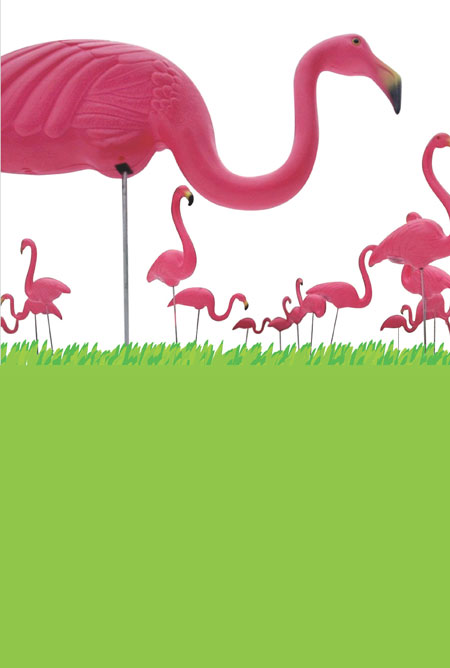garden flamingos
The first garden gnome appeared in 1850 in a garden at Thuringia. A sculptor called Philip Griebel put it there, basing it on the German gnome myth. According to the myth, at night the stone gnomes come to life and help gardeners look after their gardens. Garden gnomes and their loyal adorers have come a long way, but they are now under threat from committed enemies. It’s such a big issue that the Royal British Horticultural Society, for example, has forbidden gnomes from its gardens forever. And in recent years gnome “liberator” groups have become famous.
Interesting and stimulating as the world of garden gnomes is, we’re talking about birds here, and garden flamingos are what we’re interested in. They were created in 1957 and their creator is well known in the gnome world. The artist Don Featherstone designed them. And we have to speak in plural here because garden flamingos always come in pairs, at least. There are two of them and they are sold in pairs. One holds its head high, the other bends it down. They have pink bodies, usually have their maker’s name on their bellies and their legs, made of bare wire, are easily pushed into the ground. Flamingos do not have a centuries long history and their only legend is John Water’s film “Pink Flamingos” (1972). But their importance in US pop culture is undeniable. Brian Ott, a lecturer in media studies and pop culture at Denver University, has written that .
In 1979, a peculiar occurrence gave start to a custom at Madison City University, Wisconsin. During the university elections, one group put 1080 flamingos onto the campus lawns. Since then, this surrealist joke has been played time and again all over the local area. In 2009, Madison City named the plastic flamingo its official bird.
Interesting and stimulating as the world of garden gnomes is, we’re talking about birds here, and garden flamingos are what we’re interested in. They were created in 1957 and their creator is well known in the gnome world. The artist Don Featherstone designed them. And we have to speak in plural here because garden flamingos always come in pairs, at least. There are two of them and they are sold in pairs. One holds its head high, the other bends it down. They have pink bodies, usually have their maker’s name on their bellies and their legs, made of bare wire, are easily pushed into the ground. Flamingos do not have a centuries long history and their only legend is John Water’s film “Pink Flamingos” (1972). But their importance in US pop culture is undeniable. Brian Ott, a lecturer in media studies and pop culture at Denver University, has written that .
In 1979, a peculiar occurrence gave start to a custom at Madison City University, Wisconsin. During the university elections, one group put 1080 flamingos onto the campus lawns. Since then, this surrealist joke has been played time and again all over the local area. In 2009, Madison City named the plastic flamingo its official bird.



